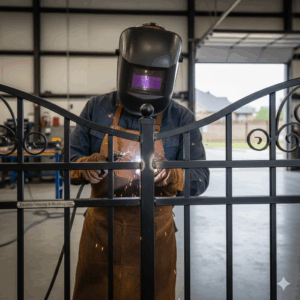Dance is more than just movement to music. It’s a fun way for kids to express themselves, build confidence, and pick up valuable life skills along the way. When parents search for kids dance classes near me, they’re often thinking about giving their child an outlet for energy or a hobby. But dance brings much more to the table than entertainment. It’s a powerful tool for growth in many different areas.
Building Physical Strength and Coordination
One of the first things kids gain from dance lessons is better physical strength. Dancing works muscles from head to toe. Whether they’re spinning, jumping, or stretching, their bodies are constantly moving and adapting. This helps them grow stronger without even realizing they’re exercising. At the same time, dance improves balance and coordination, teaching kids how to control their movements in fun and creative ways.
Flexibility Comes Naturally
Kids are naturally more flexible than adults, but dance helps them maintain and even improve that flexibility. Stretching is part of almost every dance class. Over time, their range of motion increases, which can help prevent injuries and keep their bodies healthy as they grow.
Boosting Confidence and Self-Esteem
When a child learns a new dance routine and performs it in front of others, it builds confidence. They start to believe in their abilities, which carries over into other parts of their lives. Whether it’s speaking up in class or trying out for a sports team, the courage gained from dance performances sticks with them.
Applauding Their Efforts
Applause from an audience can do wonders for a child’s self-esteem. It’s not just about winning trophies; it’s about being proud of what they’ve worked hard to accomplish. Every smile and cheer tells them they’ve done something worth celebrating.
Developing Discipline and Focus
Dance classes aren’t just about fun moves. They require attention to detail, listening skills, and following instructions. Kids learn to stay focused during practice, even when routines get tricky. This discipline can help them in school, too, where concentration and patience are key to learning new subjects.
Learning to Work Toward Goals
Every dance class has goals, whether it’s nailing a new step or preparing for a recital. Kids start to see the value of working toward something, even if it takes time. They learn that practice leads to improvement, and improvement feels rewarding.
Building Social Connections
Dance classes give kids a chance to make friends outside of school. They share laughs, work together on routines, and support each other along the way. These connections can build lasting friendships and teach kids how to be part of a team.
Respecting Others’ Space
While dancing with a group, kids learn to be aware of the people around them. They respect others’ space and timing, which teaches cooperation. This awareness helps them become thoughtful, considerate teammates both inside and outside the dance studio.
Encouraging Creativity and Expression
Every child has a unique way of moving. Dance gives them the freedom to express their emotions and ideas through movement. Whether they’re telling a story through a routine or simply dancing for fun, they discover ways to communicate without words.
Dancing Through Emotions
Sometimes kids struggle to explain how they feel. Dance offers an outlet for emotions they might not be able to put into words. Moving their bodies to music can help them process feelings like excitement, frustration, or sadness in a healthy, positive way.
Building Resilience Through Challenges
Not every dance step comes easily. Kids will stumble, miss counts, or forget parts of routines. But they learn to get back up, try again, and keep moving forward. This resilience teaches them that mistakes are part of growing and that persistence pays off.
Cheering Each Other On
Dance isn’t just about individual success. In a group setting, kids cheer for their classmates, offering support when someone feels discouraged. This builds a sense of community and reminds them that they’re not alone in their struggles.
Sharpening Memory and Cognitive Skills
Dance routines often require kids to remember patterns, sequences, and timing. This helps sharpen their memory and improves brain function. It’s like a fun workout for the mind, helping them stay alert and focused both in the studio and in other areas of life.
Listening to Music with Purpose
Through dance, kids begin to listen to music differently. They pay attention to rhythm, beats, and tempo. This trains their ears and minds to recognize patterns, which can benefit them in music, language, and even math.
Final Thought
Kids dance lessons are about much more than learning steps or preparing for a recital. They shape young people into stronger, more confident, and more expressive individuals. Through movement, kids build a toolbox of skills that will help them far beyond the dance floor. So when parents search for the right dance class, they’re not just signing up their child for fun—they’re opening the door to growth in body, mind, and spirit.









